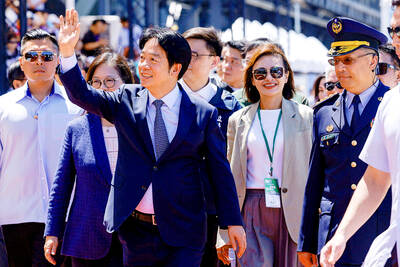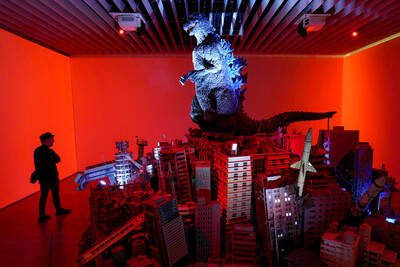Why does everyone get so worked up about making tea? The English get into a tizzy over warming the pot and milk first or last, while the Japanese have evolved a mind-numbing ceremony that makes the task comparable to a high mass. What’s all the fuss about?
Bret Hinsch has the answer, or at least one of them. He’s lived in Taiwan for 15 years and, in addition to being a professor of Chinese history at Fo Guang University, is an enthusiast for Chinese tea in all its forms. “Enjoying tea,” he writes, “takes place primarily in the mind.” It induces serenity, in other words, and promotes what Wordsworth called “the philosophic mind.” Not surprising, then, that 200 years ago the most valued possession of William and Dorothy Wordsworth in their otherwise humble English cottage was their teapot.
Hinsch’s underlying assumption in this excellent little book is that China, except for a brief interlude now coming to an end, was always at the center. Things started there and then spread outwards. Japan and England were consequently on the distant peripheries of tea-drinking culture, and all their fussiness probably originated from a fear that they weren’t doing it in quite the right way. The right way, of course, was the way it was done in China.
But Hinsch goes to some lengths to point out that the Chinese way was actually relaxed and undoctrinaire. There were as many ways of making a cuppa there as there were tea varieties, and this was entirely appropriate because tea-drinking was essentially all about relaxation and ease.
Taiwan is everywhere in this book. The author’s favorite watering hole is the Wang De Chuan Teahouse (王德傳茶莊) in Taipei, and he’s not surprisingly an enthusiast for Taiwanese oolongs, the semi-oxidized teas that occupy a space between green and red in the grand spectrum of Chinese infusions. These, he points out, descend historically from the darker, stronger oolongs of Fujian Province but are lighter, brighter and, these days, produced with a technical sophistication (that nonetheless preserves essential quality) scarcely to be matched in China itself.
This Taiwanese hi-tech comes at a price, however, resulting in oolongs being mostly sold here in the affluent country that produces them. The wide variety of altitudes available for tea cultivation in Taiwan goes a long way to explaining the range of local teas, Hinsch informs us, but Taiwanese tea in general can be seen as nonetheless just one variation on a pan-Chinese theme, or one section — possibly the higher wind instruments — in a grand orchestral effect.
As regards price generally, the most expensive tea mentioned in this book, and described as being “virtually impossible to obtain,” is also an oolong, the legendary Big Red Robe tea (大紅袍茶) from crags high on Wuyi Mountain in Fujian Province. In 2004 a small amount, guaranteed as authentic by the Wuyi local government, was auctioned in Hong Kong and fetched a staggering HK$166,000 (around US$21,283).
Most Westerners in Hong Kong would find this arcane world hard to come to terms with. They’d be more interested in seeking out the latest Cabernet Sauvignon than paying that kind of money for a pinch of tea they wouldn’t ever dare drink. But status comes in different guises for the Cantonese, and if by any chance it was a foreigner who paid that price it could only have been as a once-in-a-lifetime gift to a Chinese tycoon to finalize some out-of-this-world business deal.
Fashion influences tea just as it does anything else. The Wenshan District (文山區) of Taipei City used to be famous in the West for its Oriental Beauty tea (東方美人茶), dubbed at the time the champagne of teas despite being an oolong that was almost red in color. And 50 years ago the area around Sun Moon Lake developed an imitation of Indian tea to satisfy international preferences. Both eventually became priced out of the market.
China and Vietnam are producing fake Taiwanese oolongs, we read, hoping to cash in on the prestige and price-tag of the originals. I enjoyed Hinsch’s balanced comment here: “Counterfeit tea is not necessarily bad, but, of course, consumers deserve to get what they are paying for.”
Until recently, Western tastes have differed strongly from the Chinese norm. After the 19th-century British had engineered a move away from Chinese green teas to the heavily oxidized reds they were busy developing in India and Sri Lanka, the only China-produced tea left in fashion was the smoked Lapsang Souchong, something from which any well-bred Chinese could be guaranteed to shrink away from in horror. It nonetheless gained an international cachet as James Bond’s preferred tipple, laced in his case with Scotch whisky (Hinsch recommends Laphroaig).
However, Chinese green tea — far and away the most common kind, with too many varieties for our author to list — is back in fashion as a bringer, not only of good cheer, but of health. This, it’s hard not to think, is a harbinger of what’s to come — a China-dominated world where things Chinese are eagerly sought after as fashion accessories. Under the emperors, teas were long given to the court as tribute — notably the celebrated pu-er (普洱茶) teas from Yunnan Province, but also Fujian’s oolongs — and it can’t be long before what’s being drunk in Beijing’s corridors of power will be eagerly sought after in the supermarkets of the West, marketed of course in exactly these terms.
When that time arrives, The Ultimate Guide to Chinese Tea will be an estimable book to have at your side, to help ensure you aren’t bamboozled by the advertising if nothing else.

Last week, on the heels of the recall election that turned out so badly for Taiwan, came the news that US President Donald Trump had blocked the transit of President William Lai (賴清德) through the US on his way to Latin America. A few days later the international media reported that in June a scheduled visit by Minister of National Defense Wellington Koo (顧立雄) for high level meetings was canceled by the US after China’s President Xi Jinping (習近平) asked Trump to curb US engagement with Taiwan during a June phone call. The cancellation of Lai’s transit was a gaudy

Following the shock complete failure of all the recall votes against Chinese Nationalist Party (KMT) lawmakers on July 26, pan-blue supporters and the Chinese Communist Party (CCP) were giddy with victory. A notable exception was KMT Chairman Eric Chu (朱立倫), who knew better. At a press conference on July 29, he bowed deeply in gratitude to the voters and said the recalls were “not about which party won or lost, but were a great victory for the Taiwanese voters.” The entire recall process was a disaster for both the KMT and the Democratic Progressive Party (DPP). The only bright spot for

As last month dawned, the Democratic Progressive Party (DPP) was in a good position. The recall campaigns had strong momentum, polling showed many Chinese Nationalist Party (KMT) lawmakers at risk of recall and even the KMT was bracing for losing seats while facing a tsunami of voter fraud investigations. Polling pointed to some of the recalls being a lock for victory. Though in most districts the majority was against recalling their lawmaker, among voters “definitely” planning to vote, there were double-digit margins in favor of recall in at least five districts, with three districts near or above 20 percent in

From Godzilla’s fiery atomic breath to post-apocalyptic anime and harrowing depictions of radiation sickness, the influence of the nuclear bombings of Hiroshima and Nagasaki runs deep in Japanese popular culture. In the 80 years since the World War II attacks, stories of destruction and mutation have been fused with fears around natural disasters and, more recently, the Fukushima crisis. Classic manga and anime series Astro Boy is called “Mighty Atom” in Japanese, while city-leveling explosions loom large in other titles such as Akira, Neon Genesis Evangelion and Attack on Titan. “Living through tremendous pain” and overcoming trauma is a recurrent theme in Japan’s